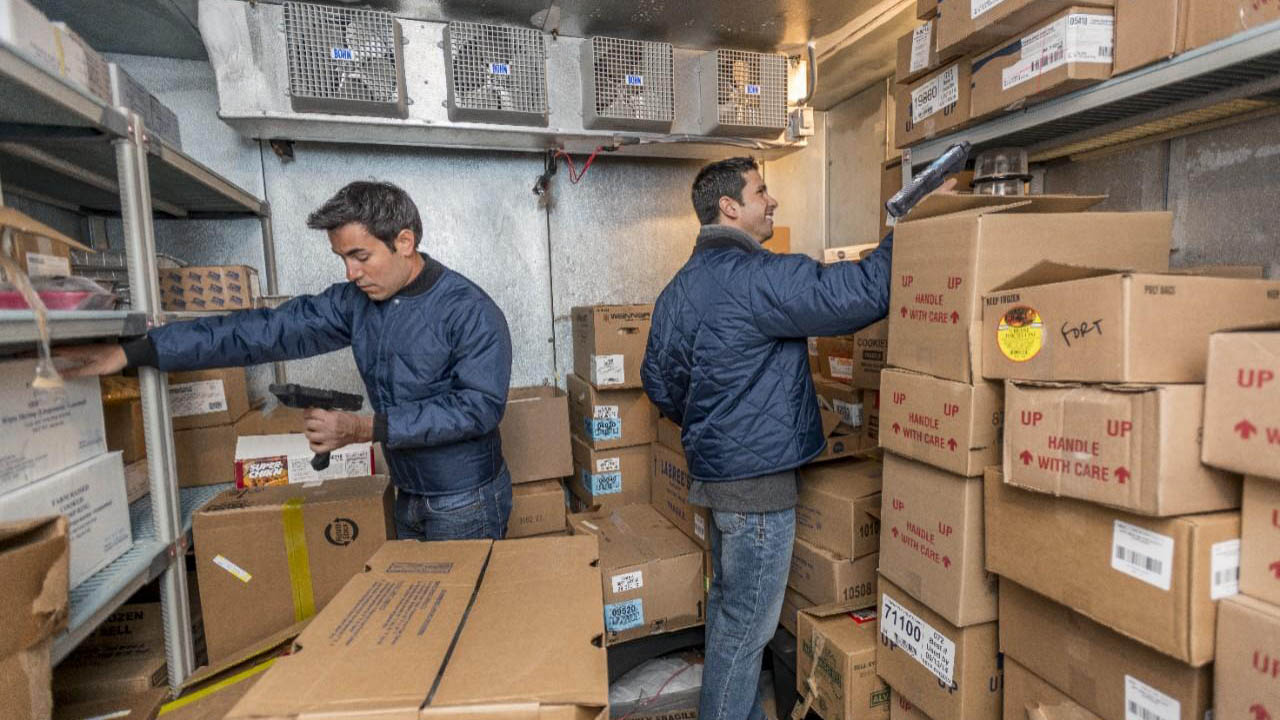
Four Reasons Why It May Be Smart for You to Rent or Buy Refurbished Mobile Devices for Your Workers Right Now
With so many uncertainties in the world today, it’s hard to predict exactly how many devices you will need to scale and when. That’s exactly why many organizations are making the decision to buy or renting pre-owned mobile devices to help meet customer and operational demands.
Warehouse operators, retailers, healthcare providers, public safety leaders and telecommunications service providers all agree that mobile devices boost worker productivity. Even restaurateurs, hoteliers, mail couriers, and transportation and logistics providers are finding the digitalization of dispatch, inventory management, sales, and customer service actions transformative. With the right mobility solution in hand, their teams can see what’s happening, know why it’s happening, and clearly understand what to do about it. Issues can be minimized, opportunities maximized, and workflows optimized as often as needed without significant operational disruption.
But many Zebra customers have told us that ensuring workers are equipped with the right devices is easier said than done – even when they have a trusted partner consulting on their technology strategy.
The explosion in e-commerce and upsurge in healthcare needs is causing both operational and labor demands across supply chains and supporting industries to skyrocket. Job boards are lighting up in nearly every sector – and almost every one of those new hires will likely need access to a mobile computing device (at a minimum) to be able to jump in on day one and be productive, especially if they’re on the front lines. The problem is that no one knows for sure if these demand levels will be sustained long term. So, many organizations are hesitant to buy 100 extra sets of mobile computers, chargers and accessories today that may not be needed a year from now, especially if budgets are tight. The jobs being created today might prove to be seasonal.
Then again, maybe they won’t.
The current driver shortage is causing déjà vu for some who faced similar challenges in 2018, and warehouse labor was scarce long before the pandemic compounded the issue. We’ve also yet to see a traditional peak season since the winter of 2019. The surge demand seen in the early days of the pandemic hasn’t really subsided. It has only shifted, influenced by new supply chain disruptors. There are also several dynamics making it difficult for healthcare providers, utility companies and other service providers to “return to normal”: major weather events, wildfires, and demand carryover from the pandemic among them.
Either way, two things are for certain:
1. Every worker needs to be able to connect to information systems and receive actionable insights right now if they are to be productive and help relieve the burden being placed on businesses.
2. Purchasing or renting certified refurbished mobile devices buys businesses time to figure out their long-term technology needs and strategy by closing the gap between current workforce and workflow requirements.
The Many (New) Benefits of the Circular Economy – and Mobile Device Rental Programs
When Zebra first introduced its Device Buy-Back program and started selling Zebra Certified refurbished devices as part of our expanding Circular Economy model, we thought the primary beneficiaries would be customers who weren’t quite ready to transition from Windows® CE/Mobile devices to Android™ devices. Most companies had stopped selling Windows mobile computers since Microsoft was ending support for those devices by 2021, yet many customers were still running a Windows-based system – and their Zebra mobile computers still had a lot of life left in them. So, our Zebra Certified Refurbished Devices program gave them a way to purchase additional Windows mobile computers as needed to support a growing workforce or new workflows until they made the full transition to Android – something they now had the flexibility to do on their own time. When they eventually completed their full tech refresh, they could sell us their working legacy Windows devices via the Device Buy-Back program or we could recycle them to keep them out of the landfill.
By creating a sustainable loop – a Circular Economy – we were able to ensure customers could get their hands on the mobile technology they needed, when they needed it, while keeping legacy devices out of landfills. (We will eventually recycle devices when they reach end of life, but the goal is to extend their lives as much as possible to everyone’s benefit.)
Then the pandemic hit and so did the reality that even one’s best laid plans are probably going to change. For most businesses, they changed a lot – and often! So, we decided to add a device rental option to our Certified Refurbished Device program and Circular Economy model, hoping it would make it easier for you to make the best of today while you figure out what the best technology move is for tomorrow. We know…
1. it’s hard to articulate future needs given how much is changing these days. Though we do our best to help you anticipate market demand and follow a well-defined technology roadmap that aligns with business forecasts, it’s impossible to know for certain what you will need long term (unless you have a crystal ball.) Even if you expect your current workforce levels to remain stable or you think you have enough spare devices on hand to replace those reaching end of life, it’s very possible you will need extra devices before your next tech refresh. You may also need different capabilities than your current devices can support. So, being able to temporarily add different device models or form factors onto your existing mobility platform without a significant, long-term investment is valuable.
2. technology deployments may be delayed when business demands surge. It’s possible you will need to rely on legacy technology solutions longer than expected. Even before COVID-19 and ensuing supply chain disruptions complicated business operations, it took a great deal of effort to keep large-scale modernization projects on track. Even the most straightforward mobile solution implementations take time, and it only takes one minor setback to stall the migration from one OS or device model to the next. Rented devices can address current gaps while you continue to make progress toward the larger refresh.
3. you may not be quite ready yet to make technology changes. In a perfect world, every organization would be able to upgrade to the latest and greatest technology when it hits the market. However, we know that not everyone is going to be in a position to rip and replace devices every few months – or every few years. If the mobility solutions you rolled out five years ago are still working very well within your environment (even those running on the Windows Mobile or CE OS), and you don’t have the resources to introduce new devices into the mix or overhaul your mobility architecture right now, then renting or buying Zebra’s certified refurbished devices enables you to scale your existing solution to keep up with evolving business demands while you map your path forward and start to build your new solution.
4. you may need time to test certain technology strategies before committing. Though most solution trials use the intended mobile device models to ensure proper functionality, it’s possible to test new workflows using an older generation version of the same form factor. For example, if your patrol officers had previously been dispatched with bulky laptops and you want to test a lighter rugged tablet or handheld mobile computer for those some field-based workflows, you may decide to rent those devices to see how officers respond to the smaller, more mobile form factors. Do they find it easy to navigate to calls, file reports or issue e-citations? User feedback can help inform your final solution design.
The Long-Term Payoff of Temporary Mobility Solutions
The pandemic accelerated innovation. Yet, we know customer expectations and market disruptors continue to outpace innovation in many cases. Even organizations that thought they were gaining an operational edge have learned frequent technology expansion and solution refinement is needed to maintain that edge.
By renting or buying certified refurbished devices from Zebra, you can integrate the enterprise-grade technology tools that meet your current needs without overhauling entire systems and workflows or overspending on what will likely be a temporary solution. We ensure every certified refurbished device meets the same performance and durability standards as a brand-new device, and we include all the software licenses you need to maximize the device toolset at no additional cost. We also give you access to Zebra OneCare™ service and support.** All of this combined will make it easier for you to boost worker output, extract a greater return on investment for your existing solution, have time to build confidence in – or simply build out – your next-generation solution, and save money in the meantime.
If you’re interested in learning more about Zebra’s Certified Refurbished Device purchase or rental program or any of our other Circular Economy programs, I encourage you to visit our website or contact your Zebra representative. They can provide more detailed information about your current* device rental, purchase, recycling and buy-back options. You may also want to check out this video:
*Rental devices are currently available to customers in the United States, Canada, United Kingdom, European Union, China, and Australia. Refurbished devices are more widely available for purchase across North America, Europe, the Middle East, and Africa as well as China, Australia, Mexico, Argentina, Chile, Colombia, and Ecuador.
**Only Zebra can certify Zebra refurbished devices to the highest original manufacturing standards, offer access to proprietary and authorized software, and provide customers with access to Zebra trained service and support experts. If you want to verify the certification and support offerings for a refurbished device, please contact us here.
###
Related Resources:

Tom Schmidt
Tom Schmidt is responsible for growing and driving a mobile computer and printer-based SaaS platform which delivers critical operational and performance insights. He is also responsible for driving the product management of Zebra's Managed Service potfolio, which delivers exceptional customer value through industry-leading operational availability, performance, security and process and workflow optimization.
Tom has over 20 years of experience leading large R&D, product management and bsiness strategy teams at NCR, Cisco Systems, Lucent Technologies, and AT&T Bell Laboratories.






